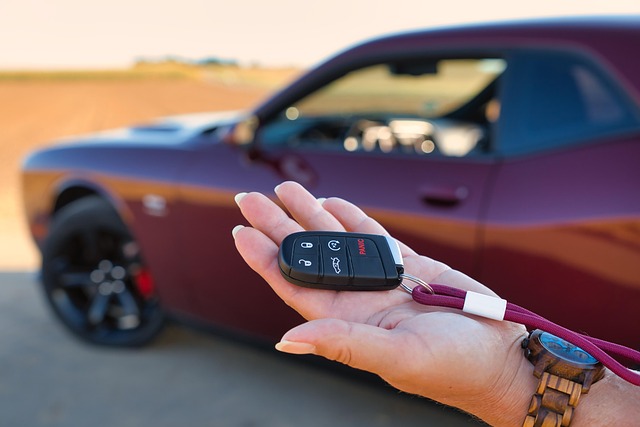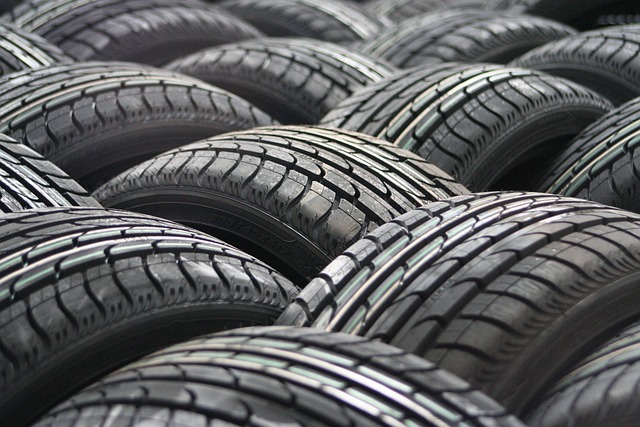“Looking to register your car in California? This comprehensive guide walks you through the process step-by-step, ensuring a smooth experience. From understanding key requirements and gathering essential documents to verifying your vehicle’s VIN (a crucial part of the process), we’ve got you covered. We’ll also help you choose the right registration type and navigate the application and fee payment process. Get ready to hit the road legally!”
- Understand California Car Registration Requirements
- Gather Necessary Documents for Car Registration
- How to Verify a Vehicle's VIN (Vehicle Identification Number)
- Choose an Appropriate Registration Type in California
- Submit Your Application and Pay Fees for Car Registration
Understand California Car Registration Requirements

Before registering your car in California, it’s crucial to understand the state’s specific requirements for vehicle registration. One key aspect is ensuring that your car has passed a recent safety inspection. This includes verifying the Vehicle Identification Number (VIN) to check for any outstanding issues or recalls, which can often be done through a mobile VIN verification service.
In California, all vehicles must meet certain safety and emissions standards as determined by the California Department of Motor Vehicles (DMV). Additionally, you’ll need to provide proof of insurance and pay registration fees. A mobile VIN inspection service can help streamline this process by quickly validating your vehicle’s history before you submit your registration application.
Gather Necessary Documents for Car Registration

Before you begin the registration process, it’s crucial to gather all the essential documents. One critical step is to verify your vehicle’s VIN (Vehicle Identification Number) using a reliable method like a mobile VIN verifier. This unique identifier provides vital information about your car’s history and specifications, making it an indispensable tool for accurate registration. Ensure you have access to both the vehicle’s title and its current registration, if applicable.
Additionally, prepare any other relevant paperwork, such as proof of insurance, a completed application form (obtained from the California Department of Motor Vehicles), and perhaps even a repair estimate or service records. With these documents in hand, you’ll be well-prepared to navigate the car registration process smoothly and efficiently, whether you’re opting for a traditional DMV visit or utilizing mobile VIN inspection services.
How to Verify a Vehicle's VIN (Vehicle Identification Number)

Verifying a vehicle’s VIN (Vehicle Identification Number) is an essential step in the registration process in California. There are various methods to do this, but using a reliable vin verifier is recommended. You can cross-reference the VIN with official databases by visiting your local Department of Motor Vehicles (DMV) or utilizing an online mobile vin verification service. These tools ensure that the vehicle’s history and specifications match, which is crucial for accurate registration.
A vin inspection involves checking the VIN against a database to uncover any potential issues, such as odometer rollback or undisclosed damage. This step helps protect you from buying a car with a hidden problem. Many mobile vin verifier apps are available that provide quick and easy access to this information, making it convenient for consumers during their vehicle purchase journey in California.
Choose an Appropriate Registration Type in California

When registering your car in California, understanding the different registration types is crucial. The state offers various options depending on your vehicle’s purpose and use. One essential step is to choose the appropriate registration class, which can be a standard passenger vehicle or specialized types such as motorcycles, recreational vehicles (RVs), or classic cars. Each category has specific requirements, including fee structures and documentation needed.
For example, if you’re importing a vehicle or buying one privately, you might require a mobile vin verification or inspection to ensure the vehicle’s authenticity and history. This process involves using a specialized tool to check the vehicle identification number (VIN) data against various databases, providing a comprehensive report on the car’s past. Such services can be conducted remotely, making it convenient for out-of-state purchases or when dealing with rare or classic cars.
Submit Your Application and Pay Fees for Car Registration

After ensuring your car meets all necessary requirements, it’s time to submit your application for car registration. You’ll need to complete and file Form SM 48 (Application for Title and Registration) along with the required fees. These fees include a base fee, a vehicle license fee, and possibly other charges depending on your vehicle’s emissions status.
You can submit your application at a California Department of Motor Vehicles (DMV) field office or by mail. If you opt for mail-in registration, make sure to enclose all necessary documents and payments. Additionally, consider using a mobile vin verification service to ensure the accuracy of your vehicle’s identification number (VIN). This vin inspection can be done quickly and conveniently, often with just a few photos taken by your smartphone. Alternatively, many mobile vin verifiers offer on-site inspections for added convenience.
Registering your car in California is a straightforward process that ensures your vehicle is legal on state roads. By understanding the requirements, gathering essential documents, and using reliable VIN verification services like a vin verifier, you can easily complete the registration process. Choose the appropriate registration type, submit your application, and pay the fees to ensure your vehicle’s compliance and safety.
